One of the major factor contributing to the success of SLR camera is its ability to let you see the image through the same lens that is used to take the picture. As light rays reflecting off the mirror fall on a ground-glass focusing screen. However, focusing screen has another purpose inside a camera. I am not sure whether you realize the fact that the distance from the lens mounting flange to the film plane is the same as the distance to the focusing screen by way of the mirror.
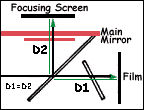 |
So, if an image is in focus on the screen it will also be in focus on the film during an exposure process where the main reflex mirror moves out of the way. Thus, a focusing screen is the "template" for an final image which will eventually exposed onto film where you use the focusing screen to make focus adjustments as a substitute for the film plane. |
Every great 35mm SLR system usually has a complete viewing aid solution rather than providing a fixed type of focusing screen. Although the CONTAX RTS II has not been designed with a interchangeable viewfinder system but as any other recognized major 35mm photographic system, it has provided with a choice of eight carefully chosen interchangeable focusing screens to supplement photographers whose work may demand for varying degree of technical difficulties. Anyway, regardless they are used for sole viewing comfort or for addressing technical requirements, there must be a suitable types of screen for you.
The Focusing Screens
 |
 |
 |
 |
 |
|
 |
 |
 |
 |
UPDATE:- Hello, First, thank you for an amazing site! I feel that your page on Contax focusing screens could be improved a bit. Are you aware that the RTS II screens do not fit the original RTS? The screens for the original RTS are a bit smaller and the tab is located in a different place. Searching the net it's very difficult to find information on which screens fit the original RTS and based on KEH's pages the correct answer seems to be screens without a prefix like #1 = microprism or #3 = split-image 45 degree while the numbering is the same as the RTS II FS-series screens. It would be great if you could add this info to your page and maybe prevent others making the mistake of getting a RTS II screen for the RTS. A separate row for the RTS in the quick reference table would be very nice.
Best Regards, Petri Rahikkala <petri_rahikkala@hotmail.com>
Focusing Screens (FS Type)
 |
FS.1 Microprism Screen: This is the standard screen provided with the RTS II Quartz body. When the subject is in sharp focus, the image appears crisp and sharp within the center microprism area. |
 |
FS.2 450 Split-lmage Screen: This is an extremely handy screen useful for most photo applications. The diagonal split-image focusing aid indicates sharp focus by the aligning of the two halves of the image. |
 |
FS.3 Horizontal Split-image Screen: Especially convenient for subjects having sharp vertical lines (Horizontal format) or horizontal lines (Vertical format). This screen is widely used, for example, in architectural photography. |
 |
FS-4 Split-lmage/Microprism Collar Screen: Combining the advantages of both types of screens, this allows the photographer to employ the split-image focusing aid for subjects with sharp lines, or the microprism collar for general-area focusing sharpness. |
 |
FS-5 Matte Screen: This screen has an overall, uniform matte field that allows critical focusing over wide areas. It is especially useful with certain focal-length lenses. |
 |
FS.6 Sectioned Matte Screen: This screen too has an overall matte field, but also features cross-section horizontal and vertical lines that can be exceptionally useful in checking perspective or proportions, or insuring proper alignment of horizons. |
 |
FS.7 Cross-Scale Screen: An overall matte field featuring vertical and horizontal cross-scale aids that allow the photographer to make size comparisons, proportional checks, etc. |
 |
FS-41 Horizontal Split-lmage/Microprism Collar w/Data Position: This is a new screen specially adapted for use with the RTS II Quartz Data Back. The horizontal split image and microprism collar focusing aids insure sharpness, while a special section of the screen indicates where data will be imprinted in the frame. |
Quartz Accuracy & Consistency and
the Shutter Mechanism inside the CONTAX RTS II Quartz
Shutter Operation & Quartz Crystal Control
The electronic timed shutter has provided a level of accuracy and consistency of
shutter speeds previously not dreamt of in mechanical SLR cameras. While shutter
speed remains a vital factor in the production of a photograph, thus one of the truly
remarkable achievement is to see Kyocera brought Quartz Crystal Control incorporated
into the CONTAX RTS II Quartz camera body.
 |
Quartz Crystal clock pulses, at the constant rate of 32,768 per second, ensure ultimate in timing accuracy and consistency and with that, RTS II Quartz was able to offer shutter speeds that are more accurate and consistent than ever before in the history of photography. |
Although the 1979's CONTAX 139Q has already been offering such distinguished element into camera design and copied by other rivaling manufacturers. This is a particularly important point, as section of he CONTAX RTS II Quartz Sales Manual explained ".... photographer can easily adjust to a minute error of shutter speed, provided that that error remains consistent. In fact, the margin of error of the RTS II Quartz shutter is so small that even the most sensitive films will not react at all to it. However, even so, these errors (which are in the range of hundreds of thousandths of a second) remain absolutely consistent. If your RTS II Quartz has, for example, an error margin of + 0.013% at a speed of 1/250 sec., that error will remain precisely + 0.013%. Mechanical shutters not only have far larger margins of error, but have inconsistent margins, so that a photographer may have to accept exposure variations as great as onehalf of an aperture setting at a particular speed...".
The Contax RTS II Quartz shutter actually
operates in two independent modes. In the Manual mode, the shutter offers click-stop
settings of B and 4 to 1/2000 sec.; in the AE (automatic exposure) mode, the shutter
operates at continuously variable speeds between a maximum of 16 seconds (at LT indication
in viewfinder display) and 1/2000 sec.
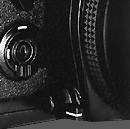 |
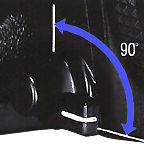 |
Mechanical Shutter Switch Lever: In addition, the shutter offers two Manually-operated, mechanical speeds, of 1/50 sec. and B, in the event of total battery failure inactivating the electronic operation. By turning this lever to the horizontal position, the photographer activates the manual, mechanical release 1/50 sec. shutter capability of the RTS 11 Quartz,.requiring no battery power. The shutter is operated by the Mechanical Shutter Release Button (Depth-of-Field Preview Button) in this mode of operation. |
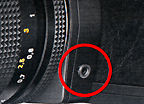 |
<Mechanical Bulb Release Socket> By connecting a commercially available cable release of the mechanical type to your camera, you will be able to mechanically induce the shutter to remain in an opened position for any desired length of time regardless of whatever shutter speed setting is in effect or of whether any battery power is available. |
Since you will be able to use it for bulb
photography without any concern over running the batteries dead as in the case of
an electronic cable release, you will find it highly suitable for extremely long
time~exposures in astrophotography applications. It should be noted that the LED
display will not function when the mechanical bulb release socket is being used.
*
When shooting by means of a cable connected to the mechanical bulb release socket,
be sure to cock the film advance lever one complete stroke.
** The
mechanical bulb release socket is not designed to accept the optionally available
Cable Switch S.
Another low profile update but of significant difference from the older RTS model was occurred inside the camera. Instead of using the fabric material, the shutter itself is now a Titanium-curtain in a horizontal format focal plane design, operated by an electromagnetic release system that provides optimum accuracy.
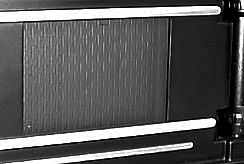 |
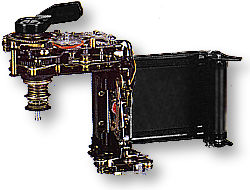 |
As with other top performing SLR camera, the CONTAX RTS II has a horizontally traveled focal plane shutter with Titanium curtain which obviously put reliability and durability on top of the priority list. |
Electromagnetic Release Function
Contax places a great deal of emphasis on its Electromagnetic Shutter Release. The
release itself is designed as feather-touch system in operation, requiring only a
0.7mm stroke to activate shutter movement. Once contact is made, there is no time
lag between the pressing of the release button and the operation of the photo-taking
process.
 |
Of course, it takes a few milliseconds to move the instant-return mirror out of the light path, but all mechanical time lag in the operating sequence itself (which is where most delays occur with mechanical shutters) has been greatly reduced, ensuring a more responsive camera operation. |
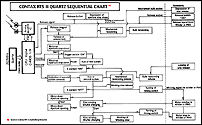 PDF file (275k) Sequential Chart PDF file (275k) Sequential Chart |
Another benefit of this instantaneous operation is it greatly reduce chances of possible camera shake, especially at the lower range of hand holdable shutter speeds where slightest of movement may magnify to cause picture blur. Since there are fewer mechanical elements moving, shuttling and generally banging their ways around inside the camera, the entire sequence is far smoother and vibration-free, while the slightest mirror movement was effectively well damped. |
A few other features found in the CONTAX RTS II Quartz are very considerate and worthy of a mention here.
 |
Quartz-timed electronic self-timer: with 10-sec. delay, cancelable or reset table during operation. LED flashes during operation, accelerating 2 sec. before shutter release. Another application for this is to utilize this operation in situation where it demand absolute minimal vibration such as super-telephotography, astrophotography or high magnification work such as Macro or close photography. |
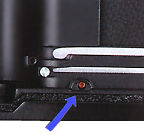 |
Data Back LED: This is a special LED which signals the Data Back Quartz D-4 to activate its automatic data imprinting capability. This LED allows cordless operation of the data back with the RTS II Quartz. |
 |
The CONTAX RTS II QUARTZ employs an Aperture Priority AE system which is far easier to handle applications such as scenic, product, portraiture or macrophotography and it is very often that one has to check the degree of depth of field during shooting sessions. The camera has a convenient way to have a 'preview' of the zone of sharpness covers with the selected aperture value. |
Warning: As CONTAX cameras employ an open aperture metering method to acquire essential exposure calculation and thus, always avoid tripping the shutter while depressing the depth-of-field preview button because by doing that you are closing the lens diaphragm down to a picture taking aperture and thus it will cause exposure inaccuracy.
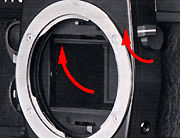 |
<Mirror Lock> CONTAX RTS series SLR camera models are among the few 35mm SLR cameras that provide this unique feature. It has a device to flip up and lock the mirror when you want to reduce vibration effects to a minimum in photomicrography and extreme close-up work. To lock the mirror, turn the mirror lock lever in the direction of arrow until the mirror flips up and locks in that position. (The viewfinder will not be viewable) To unlock the mirror, return the mirror lock lever to its original position. |
* Always ensure you have the exposure reading done before you lock the mirror.
The true strength of the CONTAX RTS II Quartz is not confined to the camera itself as it is just a tool to bridge the camera to the entire awesome CONTAX 35mm SLR photographic system where you will find every possible photographic accessories which can help to tackle virtually any photographic assignments.
The RTS series itself has a automatic film advance system comprised of high speed Motor Drive and a slower Power Winder; full system remote control devices, a revised dedicated Quartz timed Databack and as well as 250mm Bulk Film Back. On the other hand, the exciting incorporation of the TTL flash exposure control feature has also opened up plenty of photographic possibilities not imaginable previously. The TTL flash group also has developed into a full arrays of system accessories on its own around such "new found" capabilities.
<Release Socket> The
RTS series SLRs have a very original idea on this section of remote photography.
Although during its debut, the Canon T-series SLRs also have offered similar features,
but nothing come close to the Contax way.
 |
This socket may be used to attach a remote control device such as a Cable Switch S, Infrared Controller S, Radio Controller Set Auto Bellows PC and the RTF540 Auto Flash unit. It receives electrical signals from these accessories which are used to operate the shutter. |
• The use of an ordinary cable release (mechanical type) may cause camera damage, it is always encouraged to use the specific Contax cables for such purpose.
![]() Well,
if you were to ask me is CONTAX RTS II QUARTZ a worthy upgrade ? I don't need to
blink my eyes to tell you YES. But of you were to ask what attracts me most in terms
of its rich features encompasses in this great camera - I will still have to admit,
it is the Zeiss optic that is still the main factor that can pull my heart strings
to look at the CONTAX cameras. As most of you would have agreed with me that the
camera have most of the gadgets in control, but it is the lens that actually determine
the quality of images.
Well,
if you were to ask me is CONTAX RTS II QUARTZ a worthy upgrade ? I don't need to
blink my eyes to tell you YES. But of you were to ask what attracts me most in terms
of its rich features encompasses in this great camera - I will still have to admit,
it is the Zeiss optic that is still the main factor that can pull my heart strings
to look at the CONTAX cameras. As most of you would have agreed with me that the
camera have most of the gadgets in control, but it is the lens that actually determine
the quality of images.
 |
The Contax SLR cameras are very well designed SLR and I like to believe they are equally well made bodies that should lasts a few decades of good use but a single factor that people are attracted to CONTAX SLRs are mainly buying the fact that it is only way to enjoy all those fine German optic from Carl Zeiss, without doubt - one of the most respected name in the optical and photographic industry. |
| Previous | 4/4 Next: WHAT DO I DISLIKE IN THE RTS II CAMERA ?
Other Contax Accessories: Filters | Eye-Cups / Diopter lens / Right Angle Finder / Magnifier| Lens Caps/Lens Rear Caps / Body Caps / Lens Pouches | Soft lens Shades/Metal Lens Hoods/Adapter Ring/Gelatin Filter Holder set | Focusing Screens
| Back | to Index Page of Contax
RTS
| Back | to Index Page of Contax
RTS II Quartz
| Back | to Index Page of Contax
RTS III
| Back | to Main Index Page of
Contax RTS series models
Camera
Models: | Contax RTS |
RTS II | RTS
III
|
Shared
Resources:|
Motor
Drive-
PMD
W6| Winder - RTW-W3 | Screens |
Flash | Macro | Remote | Databack | Accessories | Zeiss T* Optic | Instruction Manuals: Contax RTS HTML | PDF | Contax RTS II Quartz
HTML | PDF | Contax RTS III (3
parts PDF
by mike@butkus.org, M. Butkus, NJ. Part A | Part B | Part C |
OFF TOPIC:-
Personal Note
| Main Reference
Map: RTS - HTML | PDF (206k) RTS II - HTML | PDF(308k) RTS III - HTML | PDF |
Specification: RTS - HTML | PDF(159k) RTS II - HTML | PDF(66k) RTS III - HTML | PDF |
1975: RTS 1979: 139Q 1980: 137MD 1982: 137MA 1982: RTS II |
1985: 159MM 1987: 167MT 1990: RTS III 1992: S2 1992: S2b |
1992: ST 1994: RX 1996: AX 1998: Aria 2000~ |
| List of Carl Zeiss T* lenses for Contax SLR cameras | ||||
| Message Board | for your favorite Contax RTS Series SLR Models
| Message Board | for your Contax optics
in a shared environment
| Message Board | Specifically for Dispose or Looking for Contax Photographic
Equipment
About this
photographic
site.
| Home - Photography in Malaysia |
Credit: MClau, joint maintainer of the Contax RTS MB. Some of the content are extracts from: Cees De Groot, who maintains a Contax FAQ site and Tim Roger website on Contax SLR cameras, A few of the images on Zeiss lenses were downloaded from Contax US website. My buddy, Yeak † & Rizal Yahya, for their cool programming with Contax RTS's Message Board, Note:certain contents and images appeared in this site were either scanned from official marketing leaflets, brochures, sales manuals or publications published by Kyocera over the years and/or contributions from surfers who claimed originality of their own work solely for educational purposes. The creator of the site will not be responsible for any discrepancies that may arise from such possible disputes except rectifying them after verification."Kyocera", "Yashica", "Contax" & "Carl Zeiss T*" are registered trade names of Kyocera Corporation Inc., Japan. A site made with an Apple IMac, dedicated to all fans of Contax cameras and Zeiss Optics.